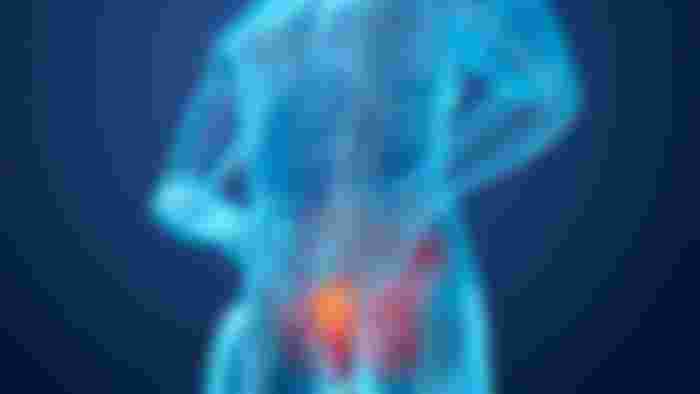For hundreds of years prostatic conditions have been among the most common diseases in men. It is normal and nowadays very frequent to say or hear that diseases of the prostate are diseases of civilization, which is considered

Here I will talk about the most frequent conditions, that is:
Prostatitis, generally due to infections.
Benign hypertrophy (prostatic adenomas), which are "thickenings" or benign tumors, comparable to goiter, for example.
Cancers of the prostate, which are truly malignant tumors, but fortunately of very slow evolution in general.
a)Prostatitis (acute and chronic): Acute prostatitis is a consequence, in most cases, of the invasion of the gland by infectious germs and their proliferation within it.
But there is no reason why the old, especially if their prostate has another disease, should not be equally affected in addition.
One may wonder how the prostate, well encapsulated, and therefore separated from the rectum, constantly excreting a liquid that should mechanically prevent the arrival of urethral germs, that prostate secretion that also contains an antibacterial substance, can become colonized by microorganisms, The answer is not simple, and very often it remains unexplained.
1) The contribution of germs by the blood: in this way, colibacilli from the intestine pass into the blood and would be taken up by the prostate, which would thus serve as an emunal.
2) Another theory admits the passage of germs from the rectum, which normally contains innumerable colibacilli, towards the prostate, either through the tissues themselves, or through the lymphatic vessels in the area.
3) It can be recognized that contamination occurs through infected urine, which should then penetrate into the gland, which is normally never the case.
Therefore, sexual activity and infection of the urethra are the two causes that come naturally to mind as a credible mechanism. It is not unthinkable that sexual practices such as coitus interruptus or retained ejaculation for too long can play a role of "bottleneck", or disturb in one way or another the circulation of urine and sperm. Either way, once settled germs find an ideal culture medium, in terms of temperature and nutritional substances, to develop.

The causative germs are eight times out of ten colibacilli, which are found in the large intestine in their normal state. It must be remembered, in effect, that this microorganism is essential to humans for the thesis of vitamin K, which plays an important role in the phenomena of blood coagulation. Let us also say immediately that, while cleaning the anal region is something desirable, an excess of cleaning, especially by means of aggressive products, does not place the region at all safe from infections.
Like an inflamed tonsil, the infected prostate becomes swollen, painful, secretes more than usual, has a tendency to bleed. Small abscesses form, which can converge and form a pocket, that is, an abscess. This abscess can empty into the urethra, which is the best solution, or into the rectum, or into the perineum, which creates a fistula, that is, a communication between the gland and the exterior, which often causes serious treatment problems.

b) Benign hypertrophy of the prostate: In a good number of males, from the age of thirty to forty years there are already very slowly progressive modifications. It will take twenty-five or thirty years for these modifications to cause real displeasure, in the neighborhood of sixty years.
These modifications consist of the appearance of nodules made up of muscles and glands, the size of which will progressively increase and cause deformations of the prostate. The nodules, which can be compared to the uterine fibroids of women, clump together and form additional masses that generally weigh about 50 grams, but can reach up to 200 and 300 grams, that is, they have the volume of a good fist.
Either way, these nodules, more or less spherical, develop from the upper prostate, which pushes the lower prostate down and towards the periphery. Everything happens as if "the egg" (upper prostate) increased in size and deformed, compressing and separating the walls of the lower prostate that contains it. It is conceived that these modifications affect the urethral canal that passes through the gland, which then becomes more elongated, forms elbows, is compressed on the sides and becomes rigid. But it is never a true narrowing or plugging. Indeed, the urethra is constantly permeable and its anteroposterior diameter is even enlarged. It is thus understood that there is no mandatory relationship between the volume of hypertrophy and the impediment imposed on the passage of urine, since chance can cause a small, misplaced nodule.

When the bladder has received about 300 cubic centimeters of urine from the two kidneys, the distention of the muscle fibers in its wall causes them to contract and triggers the urination process.
The modifications that have occurred in the bladder neck and in the beginning of the canal make the effort that the bladder must produce to trigger urination and carry it to a successful conclusion becomes more and more important. To perform this increased work, the bladder must be progressively muscled over the years. Its muscle fibers thus increase in thickness, which makes the wall thicker and the contractions more powerful.
The muscular network is arranged like a mesh, the thickening of the musculature creates contractile "columns", between which the weak points of the wall appear as gaps. Under the effects of pressure, these pockets become deeper and deeper and end for causing what is called diverticula, which is difficult to empty into the bladder. These diverticula can be considered like so many other small supplementary bladders, which in turn suffer from poor emptying and consequently aggravate the situation.
The compensation made by the bladder muscles cannot long follow the increased impediments to the passage of urine. The struggling bladder is followed by the "forced" bladder, whose wall begins to thin due to atrophy of its muscle tissue. The result is that the urine is no longer expelled in its entirety, and what is called a "urinary residue" appears, that is, after a urination, urine remains in the bladder. This is where the decompensation phase begins and the situation becomes serious. Indeed, the orifices of the ureters, provided with a valve system that prevents the return of urine towards the kidney, end up being forced in turn, and stagnation gradually rises towards the kidneys.This organ owes to its instead work against pressure, which it is quickly unable to do, and the problem progressively leads to a loss of kidney function, that is to say, uremia.
c) Cancer of the prostate: Cancer of the prostate is a particularly perplexing malignant tumor because of the problems it poses and which are almost philosophical, at least when it comes to the best treatment to apply. Indeed, on the one hand, the existence of a rather frightening number of cancers is verified, on the other hand compensated by morbidity, that is, by evidence of the disease, and acceptable mortalities, since most of the affected patients have high "chances" of dying from any other condition.

Here are the brutal facts: serial autopsies show that prostate cancer is very common. Although the figures vary from one job to another, it can be admitted that prostate cancer is discovered under the microscope, looking well, in 10 to 20% of men over forty years of age; in 40 to 60% of men over seventy years of age.
In these cases, these are latent tumors, which most of the time have not produced any disorder. But, from a microscopic point of view, they are true malignant tumors.
It is found that these tumors can remain quiet for twenty to thirty years, practically without flaking, so that many old people die of another disease, probably in a proportion of 90%. Prostate cancer still appears in second or third position in deaths from cancer in men, with the first place occupied by lung cancer and the second, so far, by cancer of the large intestine.

The triggers for cancer are nowhere near clearer than those for hypertrophy. As for other tumors, the latent virus hypothesis has been issued. On the other hand, it is known that the tumor is dependent on androgen hormones, which has important therapeutic consequences, but not completely coherent. Thus, one should not be scandalized by the divergent opinions among equally eminent specialists.
Cancer of the prostate arises in the form of multiple nodules in the lower and outer part of the gland, which corresponds to what we have called the outer bowl or the egg cup. It is therefore perfectly possible to suffer both from a banal hypertrophy of the prostate and from cancer. Indeed, eight out of ten times more or less important adenomatous modifications are discovered in the case of cancer, which is not surprising since the two conditions are very frequent.






Read About COVID-19
https://read.cash/@TalatKiani/coronaviruses-where-do-they-come-from-and-why-are-they-so-deadly-7bb2b2bf